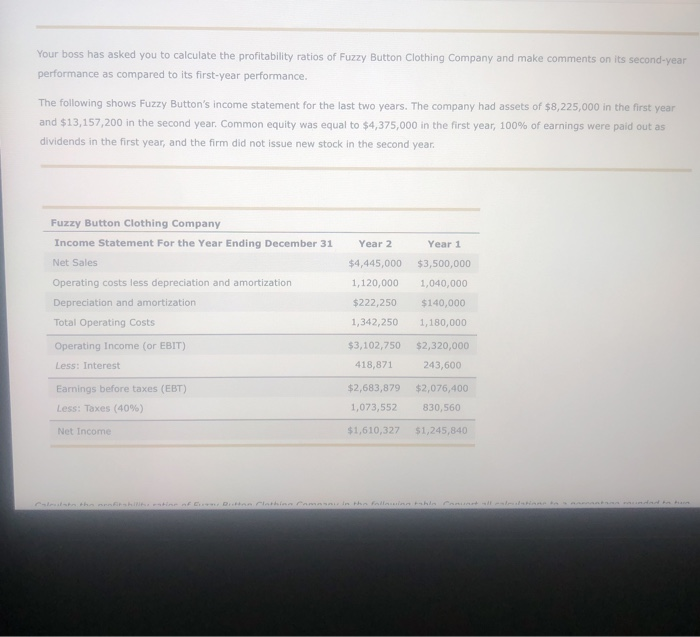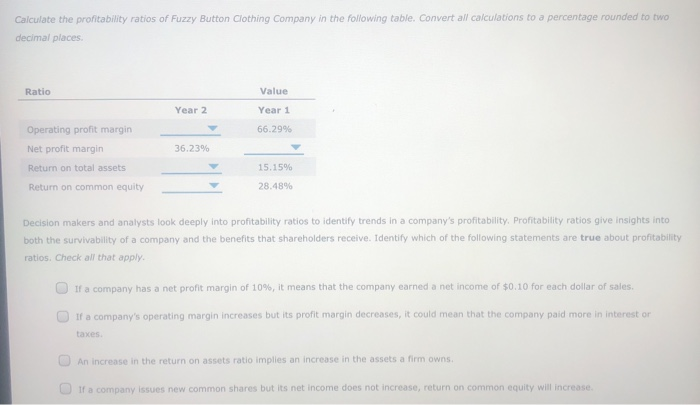
Your boss has asked you to calculate the profitability ratios of Fuzzy Button Clothing Company and make comments on its second-year performance as compared to its first-year performance. The following shows Fuzzy Button's income statement for the last two years. The company had assets of $8,225,000 in the first year and $13,157,200 in the second year. Common equity was equal to $4,375,000 in the first year, 100% of earnings were paid out as dividends in the first year, and the firm did not issue new stock in the second year. Year 2 Year 1 $4,445,000 $3,500,000 1,040,000 Fuzzy Button Clothing Company Income Statement For the Year Ending December 31 Net Sales Operating costs less depreciation and amortization Depreciation and amortization Total Operating costs Operating Income (or EBIT) Less: Interest 1,120,000 $222,250 1,342,250 $140,000 1,180,000 $2,320,000 $3,102,750 418,871 243,600 Earnings before taxes (EBT) Less: Taxes (40%) $2,683,879 1,073,552 $2,076,400 830,560 Net Income $1,610,327 $1,245,840 - then. Dit latine in the folha Cantada Calculate the profitability ratios of Fuzzy Button Clothing Company in the following table. Convert all calculations to a percentage rounded to two decimal places Ratio Value Year 2 Year 1 Operating profit margin 66.29% Net profit margin 36.23% Return on total assets 15.15% Return on common equity 28.48% Decision makers and analysts look deeply into profitability ratios to identify trends in a company's profitability. Profitability ratios give insights into both the survivability of a company and the benefits that shareholders receive. Identify which of the following statements are true about profitability ratios. Check all that apply. If a company has a net profit margin of 10%, it means that the company earned a net income of $0.10 for each dollar of sales, If a company's operating margin increases but its profit margin decreases, it could mean that the company paid more in interest or taxes An increase in the return on assets ratio implies an increase in the assets a firm owns If a company issues new common shares but its net income does not increase, return on common equity will increase








